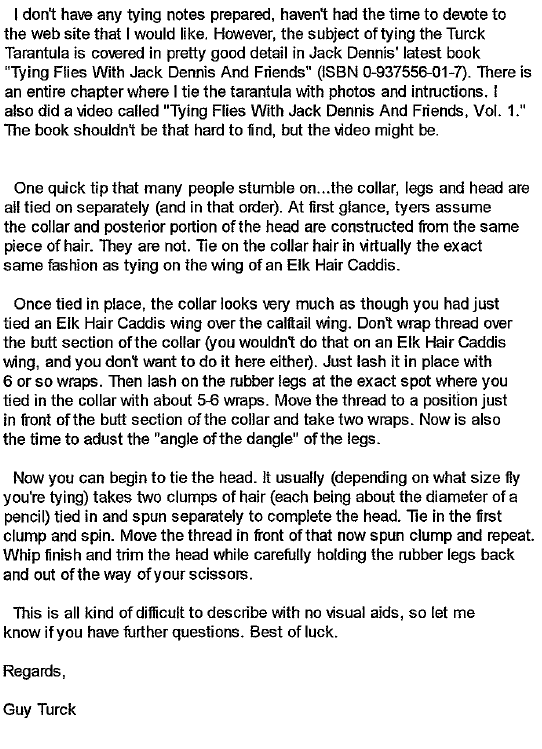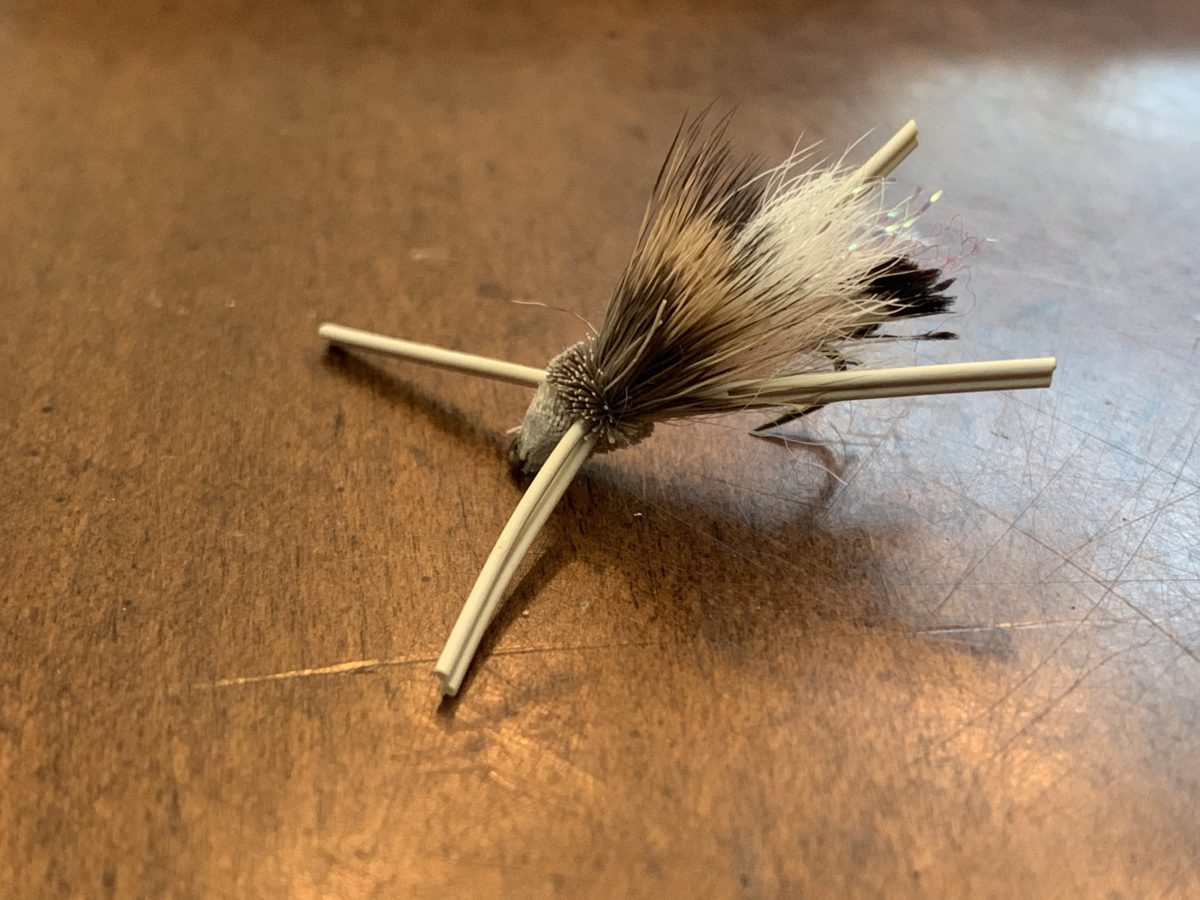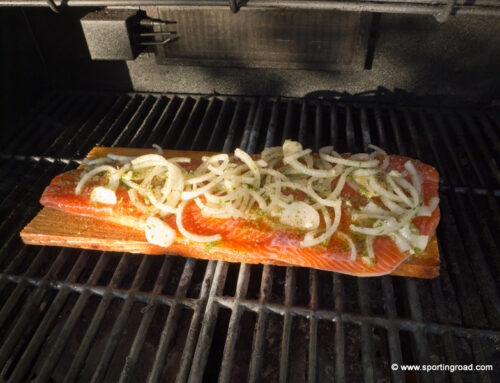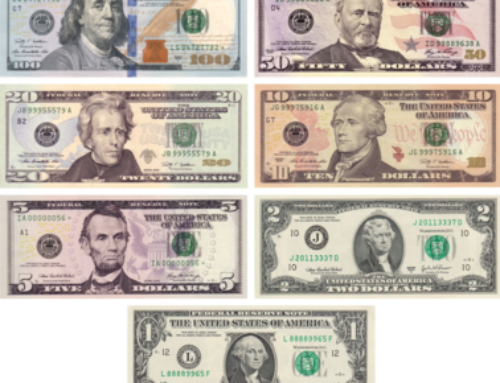It’s funny how time flies and how over time, some flies disappear while others just get repackaged with easier to tie foams, etc. One day, the Madam X is a popular pattern, and then you wake up and it’s two decades of Turck’s Tarantulas, and now there are dozens of knock-offs including the The Chubby Chernobyl, the Rubber Legged Stimulator, or the Stoneflopper. Thirty years has gone by since the Madam X. Sounds like a country song doesn’t it? But, so is life, time passes, things change, some get easier, some just get uglier. And the flies are in essence the same, but have gotten easier to tie with foam replacing spun hair, etc., which not only makes the flies uglier, but much easier to tie. I have to say I am glad I stocked up, back when flies were good looking.
One of my favoite flies is Guy Turck’s Tarantula. I was one of the first to order it from him from his site back in 1995. In 1990, Guy began guiding float fishermen for Jim Jones’ High Country Flies in Jackson. In August of 1990, while searching for a pattern that improved the durability and visibility of the increasingly popular Madam X fly, Guy developed his clipped deer hair head, rubber leg hopper/stonefly imitation. During a slow afternoon Guy handed his creation to a client, World Bank head Jim Wolfensohn. Noting the fly’s bulky, leggy appearance, Wolfensohn quipped, “What is this thing, a tarantula?”
This wonderfully creative fly name stuck like head cement. By September when the Snake’s hefty Classenia Sabulousa stoneflies become active, another guide pal, Shannon McCormick, introduced Guy to master fishing entrepreneur George Anderson of Livingston. Turck gave the “Montana Madman” a fly which he used to sweep the One Fly Competition. Turck’s Tarantula was on its way, fooling big trout, pleasing clients and carrying its creator along on a wonderful ride.
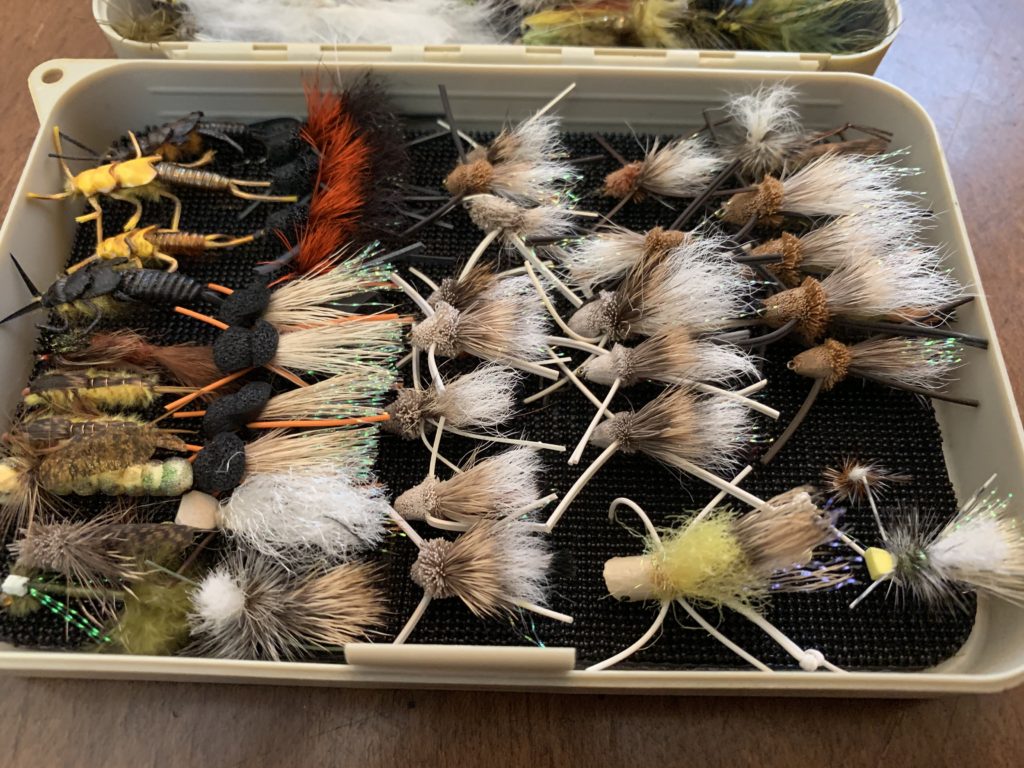
Instead of skiing and cleaning condominiums and bartending to support himself, Guy’s winters turned into long hours at the fly tying vise. The original Tarantula is not an easy fly to tie. It features numerous steps that include double rubber legs, dubbed hares mask fur body, highly visible calf tail wing, Amherst pheasant tippet tail all punctuated with the trademark flattened and triangulated head of tightly spun and delicately clipped deer hair. Guy developed tying shortcuts, added new body colors, embellished the wings and swelled the number of Tarantula sizes.
Guy writes:
In August 1990, a tying vise, an inkling of a concept and a six pack of beer brought everything together and the Turck Tarantula was born. At it’s public debut, in September 1990, it took first place honors at the Jackson Hole One Fly Event in the able hands of George Anderson. In the intervening years, it has become one of the most popular fly patterns in Jackson Hole and is being discovered and used by more and more fly fishers throughout the country and world.
In The Beginning
I’m often asked where I got the idea for the Tarantula. Like most patterns I’ve designed, the initial idea was derived from a perceived need. In other words, there was a problem to be solved and I needed to develop a new fly pattern to help solve that problem. In the summer of 1990 my fishing clients had been having good luck with a pattern you may be familiar with called the Madame X. Despite it’s effectiveness, it had a number of shortcomings which I felt could be improved upon. The commercially tied versions of the Madame X which we were using didn’t float very well and were sometimes difficult to see in the fast water streams which frequent the Jackson Hole area. What I was looking for was a pattern which maintained the Madame X’s effectiveness, but would float better and be easier to see. Any other improvements would be considered a bonus. In the end, the only feature of the Madame X to be retained by the Tarantula were the rubber legs, everything else was changed.
The Components
The visibility problem was solved by replacing the deer hair wing of the Madame X with white calftail. Sometimes I’ll also top the wing with a few strands of krystal flash. Floatation was increased by using a spun clipped deer hair head as well as dubbing the body with natural fur. The natural fur was also much more realistic than the thread body found on the Madame X (at least the commercial versions). Finally, pheasant tippets were used for the tail, which added just a touch of flash. Trout, as we all know, view a fly from below as it is backlit by the sun. From this vantage point, the backlighting effect of the sun on a natural insect creates a “halo” effect around the perimeter of the natural. Light passes through the translucent outer edge of the fly’s body, but the same light is blocked by the center of the body, which is thicker. Natural fur does an admirable job of imitating this “halo” effect because it’s fuzzy surface allows the passage of light around the fringes of the body. Thread, on the other hand, doesn’t allow for any passage of light and appears as a solid block of material (like a stick or twig would appear). The passage of light through an insects body and the resultant “halo” (depending on the actual thickness of the insect) has other important and surprising ramifications which I’ll get into later.
Tying types from my correspondence with Guy.
